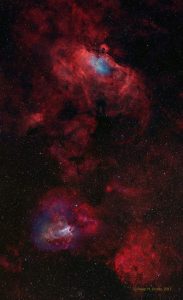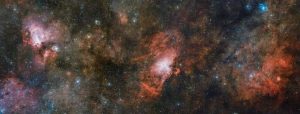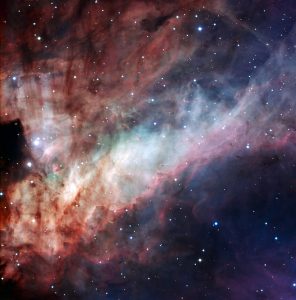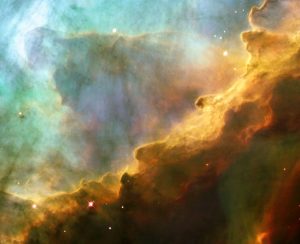Nebulosa Omega
L’Aquila e il Cigno
Questa fantastica coppia di nubi, la Nebulosa Aquila e la Nebulosa Cigno, è solo parte di un vasto complesso ricco di gas e polveri all’interno del quale nuove stelle vengono alla luce e illuminano i loro dintorni. Continua a leggere
Una Sola Immagine per Tre Oggetti Straordinari
In questa vasta immagine da tre gigapixel realizzata dal VLT Survey Telescope (VST) dell’ESO possiamo ammirare due degli oggetti più famosi in cielo, insieme ad una loro vicina meno nota: sulla destra si trova la fioca nube di gas brillante Sharpless 2-54, al centro la famosa Nebulosa Aquila e sulla sinistra la nebulosa Omega. Continua a leggere
Nessuna compagna vicina per le stelle in M17
Gli astronomi hanno scoperto che le stelle massicce nella regione di formazione stellare M17 (Nebulosa Omega) non fanno parte, al contrario di quanto ci si potrebbe aspettare, di sistemi binari stretti. Hanno iniziato il loro percorso vitale nel cosmo da sole o con stelle compagne distanti. Continua a leggere
La Tempesta Perfetta
Come la furia di un mare in tempesta, questa immagine del telescopio Hubble mostra un oceano ribollente di gas nella massiccia e luminosa nebulosa molecolare Messier 17. L’immagine riprende solo una piccola regione all’interno di Messier 17, una culla dove nascono stelle. Conosciuta anche come Nebulosa Omega, o Nebulosa Cigno, è localizzata a circa 5500 anni luce dalla Terra nella costellazione del Sagittario. Continua a leggere



